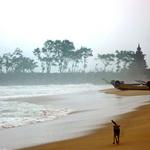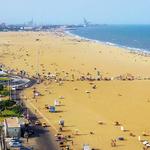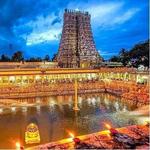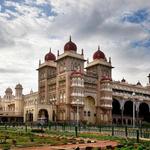Renu & Adithya
Things To Do
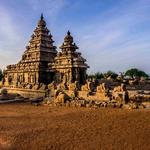
Shore Temple
The Shore Temple (c. 725 AD) is a complex of temples and shrines that overlooks the shore of the Bay of Bengal. It is a structural temple, built with blocks of granite, dating from the 8th century AD. As one of the Group of Monuments at Mahabalipuram, it has been classified as a UNESCO World Heritage Site since 1984.It is one of the oldest structural (versus rock-cut) stone temples of Southern India.

Guindy National Park
It's one of the only national parks located inside a city and has 400 blackbucks, 2,000 spotted deers, 24 jackals, a wide variety of snakes, geckos, tortoises and over 130 species of birds, 14 species of mammals, over 60 species of butterflies and spiders each, a wealth of different invertebrates. It's known for the snake park.

DakshinaChitra Heritage Museum
DakshinaChitra is an exciting cross cultural living museum of art, architecture, lifestyles, crafts and performing arts of South India. The main mission is to exhibit, promote and preserve aspects of the broader, more inclusive cultures of the states and to bring these arts to the public in a participative, enjoyable and engaging way.
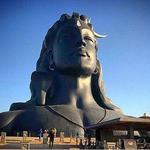
Adiyogi Shiva
Adiyogi is a 112 foot statue inaugrated by Prime Minister Narendra Modi and Sadhguru. It is based in the foothills of Velliagiri mountains and is a part of Isha Yoga Center.
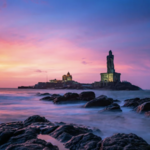
Kanyakumari Beach
This is the only place on earth, where you can see the sunrise and sunset from the ocean. You can also see the Sunset and Moonrise simultaneously on full moon days. Being the southern tip of India, this is where the three oceans intersect and you can distinctly see the color changes and waves converge from here.
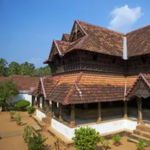
Padmanabhapuram Palace
This was once the capital of the princely state of Travancore before the king relocated the capital to Trivandrum (now the capital of Kerala) in 1795. The main attraction is Padmanabhapuram Palace, which dates back to 1600. The largest wooden palace in Asia, it boasts admirable craftsmanship and architecture—particularly with the detailed woodwork on the walls and ceilings.
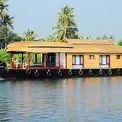
Houseboat Cruise
Referred to in Kerala as Kettuvallams, houseboats were first built in Southwestern India in around 3,000 B.C.E. and were used for the transportation of merchandise such as rice and spices as well as passengers. They navigate the area’s lush backwaters and lagoons, offering visitors tranquil journeys through historic and remote locations.
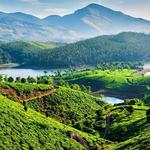
Munnar
Munnar is a town in the Western Ghats mountain range in India’s Kerala state. A hill station and former resort for the British Raj elite, it's surrounded by rolling hills dotted with tea plantations established in the late 19th century. Eravikulam National Park, a habitat for the endangered mountain goat Nilgiri tahr, is home to the Lakkam Waterfalls, hiking trails and 2,695m-tall Anamudi Peak.
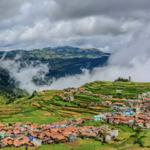
Kodaikanal
Kodaikanal is a hill town in the southern Indian state of Tamil Nadu. It’s set in an area of granite cliffs, forested valleys, lakes, waterfalls and grassy hills. At 2,000 meters above sea level, the town centers around man-made, star-shaped Kodaikanal Lake, bordered by evergreen forest. Rowing boats can be hired, and hikers and cyclists follow the 5k Lake Road path around the shore.
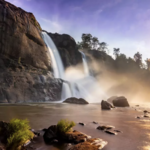
Athirappilly Water Falls
Athirappilly Falls, is situated in Athirappilly Panchayat in Chalakudy Taluk of Thrissur District in Kerala, India on the Chalakudy River, which originates from the upper reaches of the Western Ghats at the entrance to the Sholayar ranges. It is the largest waterfall in Kerala, which stands tall at 80 feet.
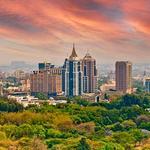
Bengaluru
The center of India's high-tech industry, the city is also known for its parks and nightlife. By Cubbon Park, Vidhana Soudha is a Neo-Dravidian legislative building. Former royal residences include 19th-century Bangalore Palace, modeled after England’s Windsor Castle, and Tipu Sultan’s Summer Palace, an 18th-century teak structure.
